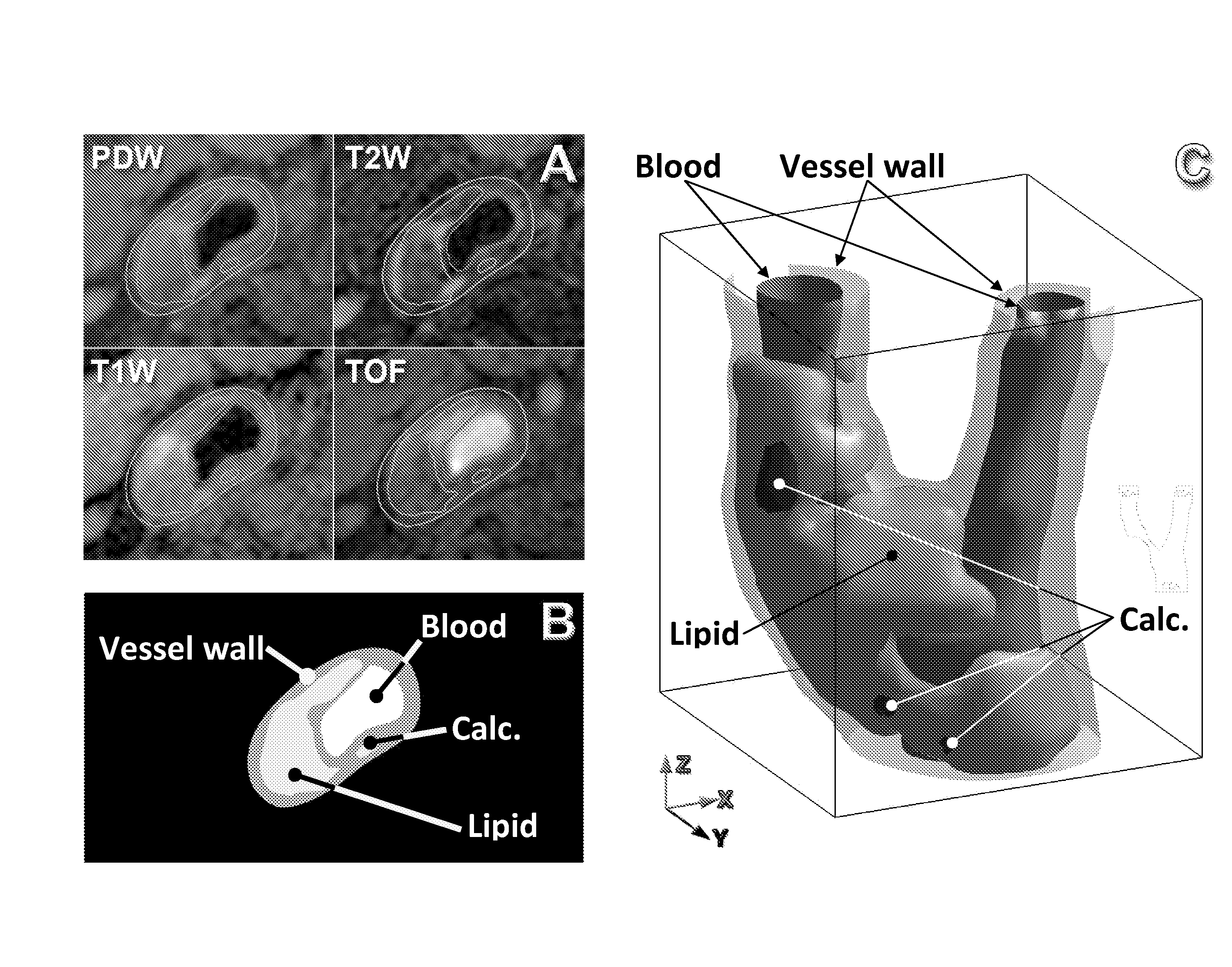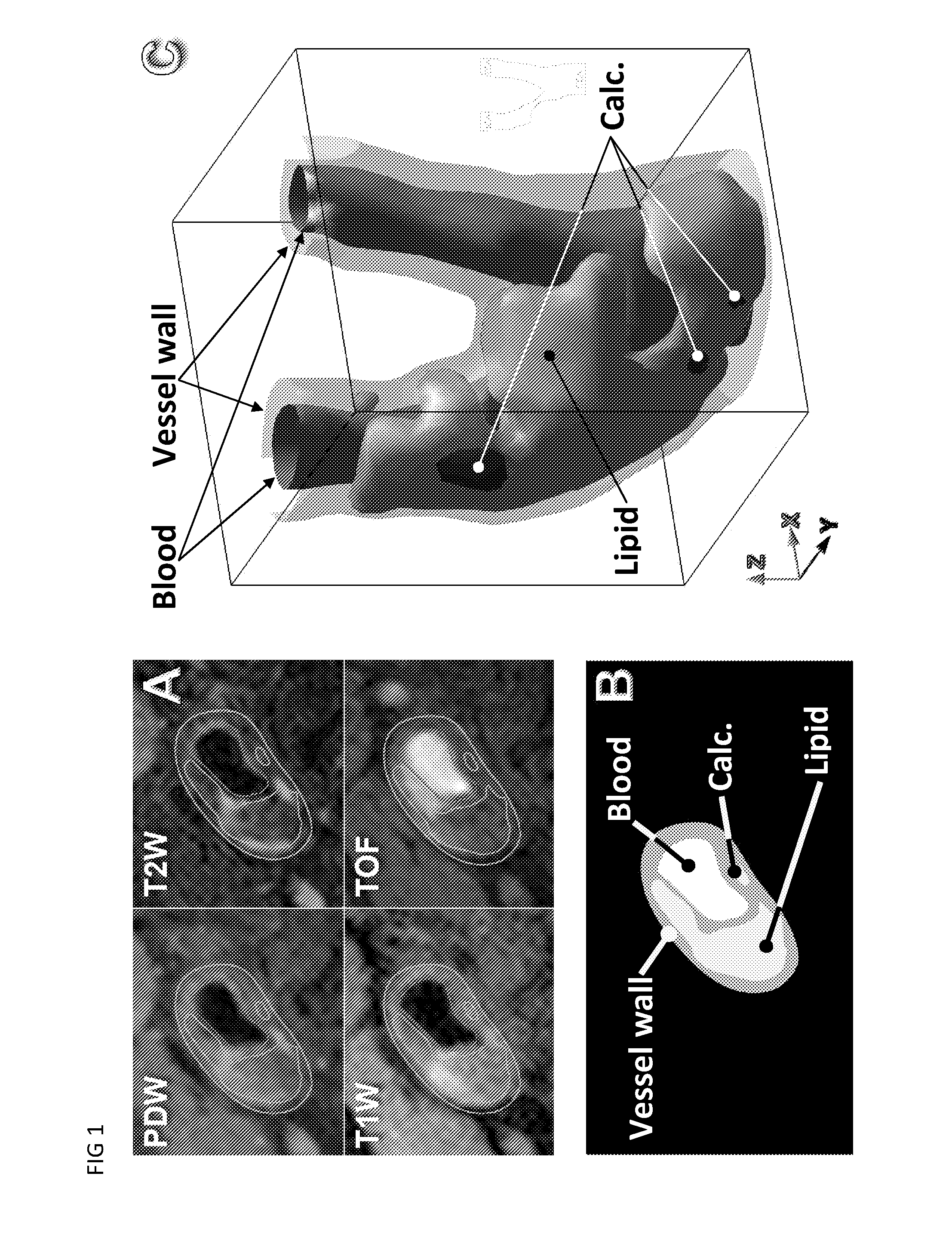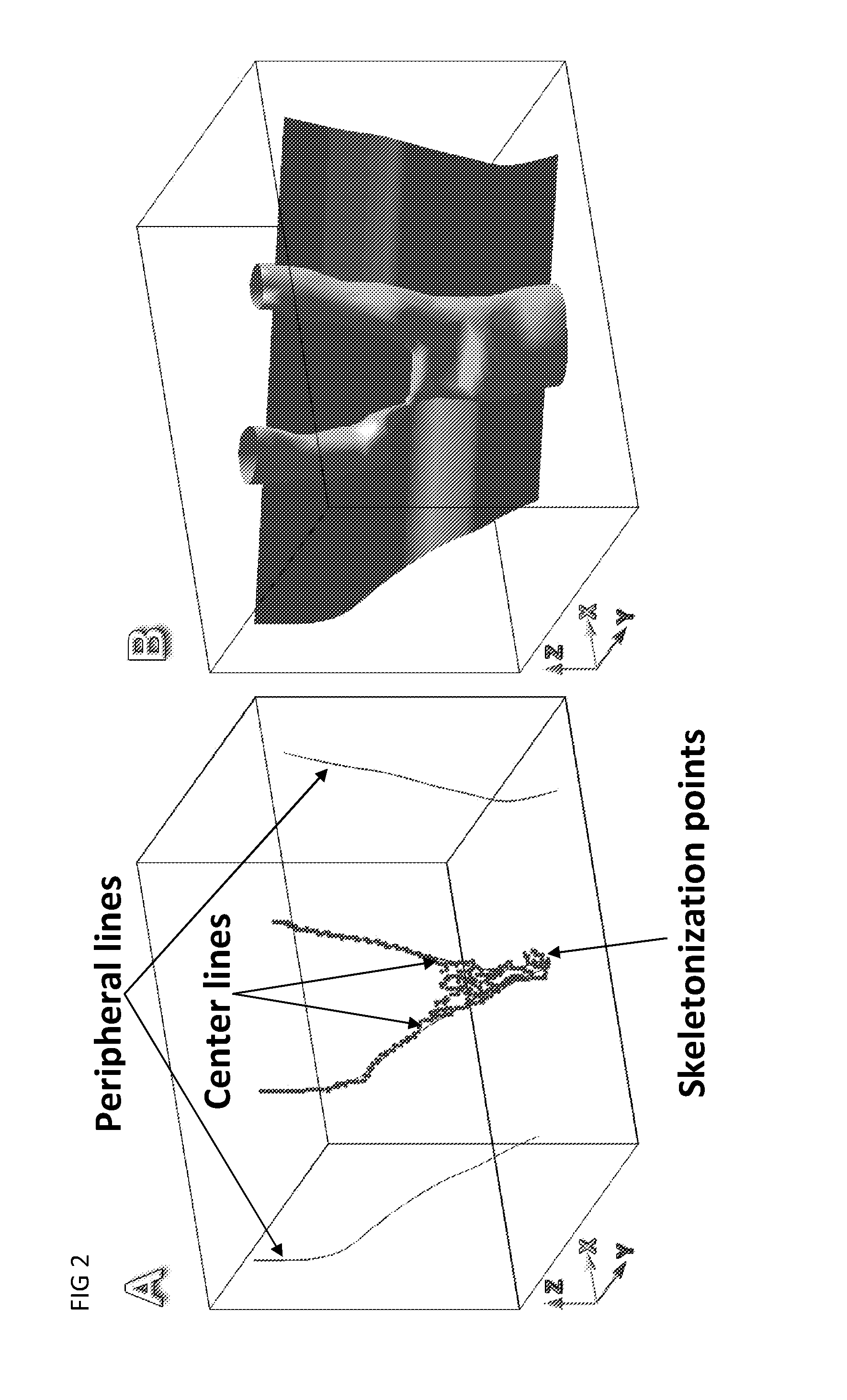Method for calculating pressures in a fluid stream through a tube section, especially a blood vessel with atherosclerotic plaque
a fluid stream and pressure calculation technology, applied in the field of fluid stream pressure calculation in the fluid stream through the tube section, can solve the problems of high computing capacity and complicated methods, and achieve the effect of facilitating the prediction of plaque rupture risk
- Summary
- Abstract
- Description
- Claims
- Application Information
AI Technical Summary
Benefits of technology
Problems solved by technology
Method used
Image
Examples
first embodiment
[0018]In a first embodiment, the method implies measuring the fluid pressure at the upstream end and measure the fluid velocity at the downstream end and include these measurements in the boundary conditions. For example, the method implies measuring the fluid velocity at the upstream end, and calculating on the basis of the pressure distribution in the tube section the expected fluid velocity at the upstream end, and comparing the measured fluid velocity and the expected fluid velocity at the upstream end as part in an evaluation procedure for the validity of the pressure calculation.
second embodiment
[0019]In a second embodiment, the method implies measuring the fluid velocity at the upstream end and wherein the boundary conditions include the measured fluid velocity at the upstream end and an estimated pressure at the downstream end. For example, the method implies measuring the fluid velocity at the downstream end, and calculating on the basis on the pressure distribution in the tube section the expected fluid velocity at the downstream end, and comparing the measured fluid velocity and the expected fluid velocity at the downstream end as part in an evaluation procedure for the validity of the pressure calculation.
[0020]In a third embodiment, the method implies using the derived longitudinal pressure distribution achieved by either the first or second embodiment as a boundary condition for calculating stresses and deformations in cross-sectional 2D models corresponding to the available image scans, for example MRI scans. Though both the first and second embodiments may be used...
PUM
 Login to View More
Login to View More Abstract
Description
Claims
Application Information
 Login to View More
Login to View More - R&D
- Intellectual Property
- Life Sciences
- Materials
- Tech Scout
- Unparalleled Data Quality
- Higher Quality Content
- 60% Fewer Hallucinations
Browse by: Latest US Patents, China's latest patents, Technical Efficacy Thesaurus, Application Domain, Technology Topic, Popular Technical Reports.
© 2025 PatSnap. All rights reserved.Legal|Privacy policy|Modern Slavery Act Transparency Statement|Sitemap|About US| Contact US: help@patsnap.com



